There’s something so vibrant and fresh about a bowl filled with tender pasta and an array of colorful vegetables, tossed in a light creamy sauce. This Easy Vegetable Pasta Primavera Recipe captures that perfect blend of simplicity and brightness, making it a staple in my kitchen when I want a wholesome meal in under 30 minutes.
Jump to:
Why You'll Love This Recipe
This dish is one of those recipes that feels both special and effortless. It’s packed with fresh veggies but doesn’t take all day, so it’s perfect for busy weeknights or those times when you want something nourishing but not complicated.
- Colorful & Nutrient-Packed: The mix of broccoli, zucchini, asparagus, and cherry tomatoes makes this pasta a rainbow on your plate with tons of vitamins.
- Simple yet Flavorful: The garlic, herbs, and a hint of red pepper flakes in the creamy sauce bring just the right amount of zing without overpowering the veggies.
- Quick and Easy to Make: With just about 30 minutes, you’ll have dinner on the table – perfect for those less-than-ideal “what’s for dinner?” moments.
- Highly Customizable: You can easily swap in your favorite vegetables or add some protein if you like, making it a versatile meal every time.
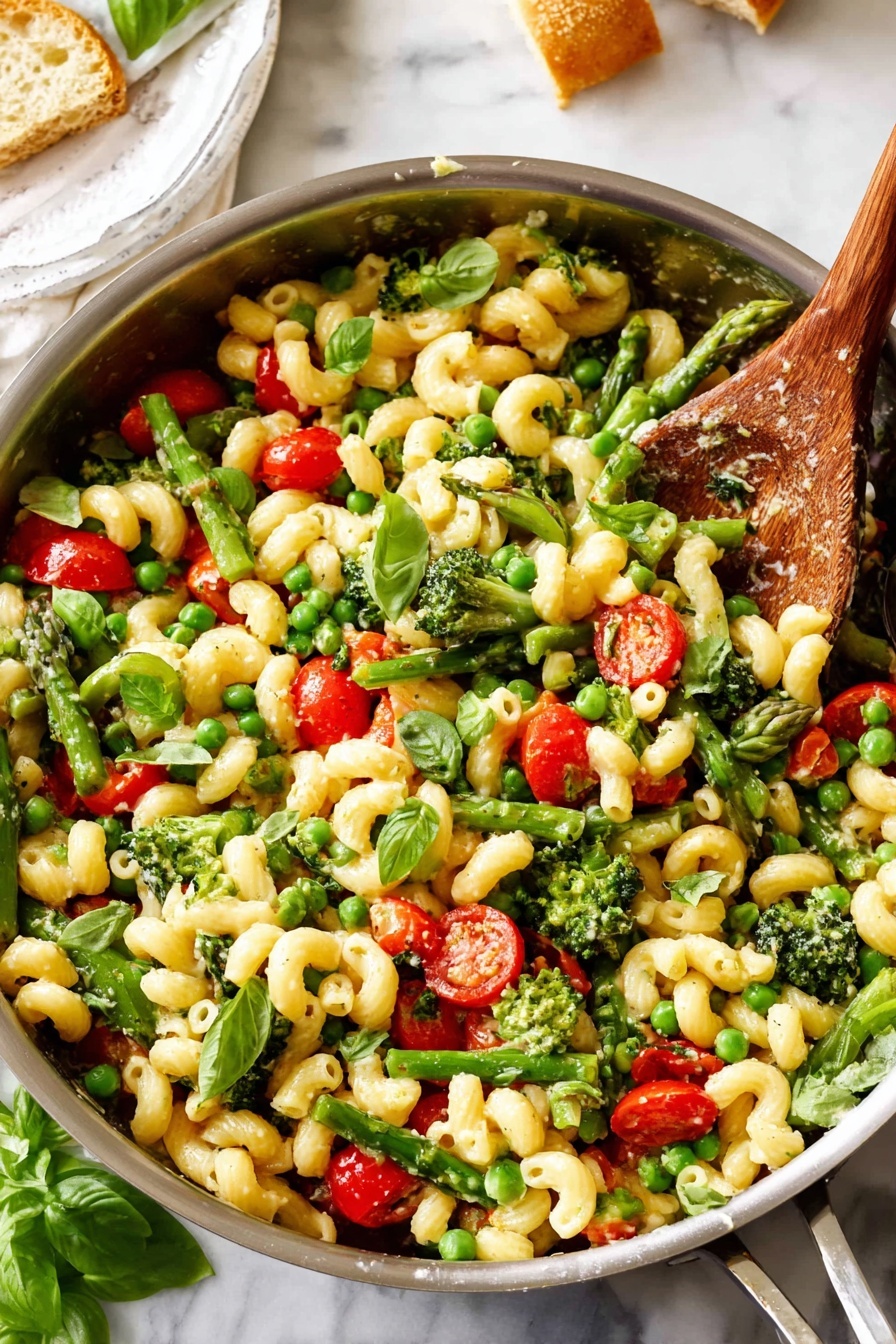
Ingredients & Why They Work
Every ingredient in this Easy Vegetable Pasta Primavera Recipe plays a key role, balancing texture and flavor. The vegetables offer freshness and crunch, the creamy sauce brings it all together, and the Parmesan adds that savory, cheesy finish. Here’s why I love each one:
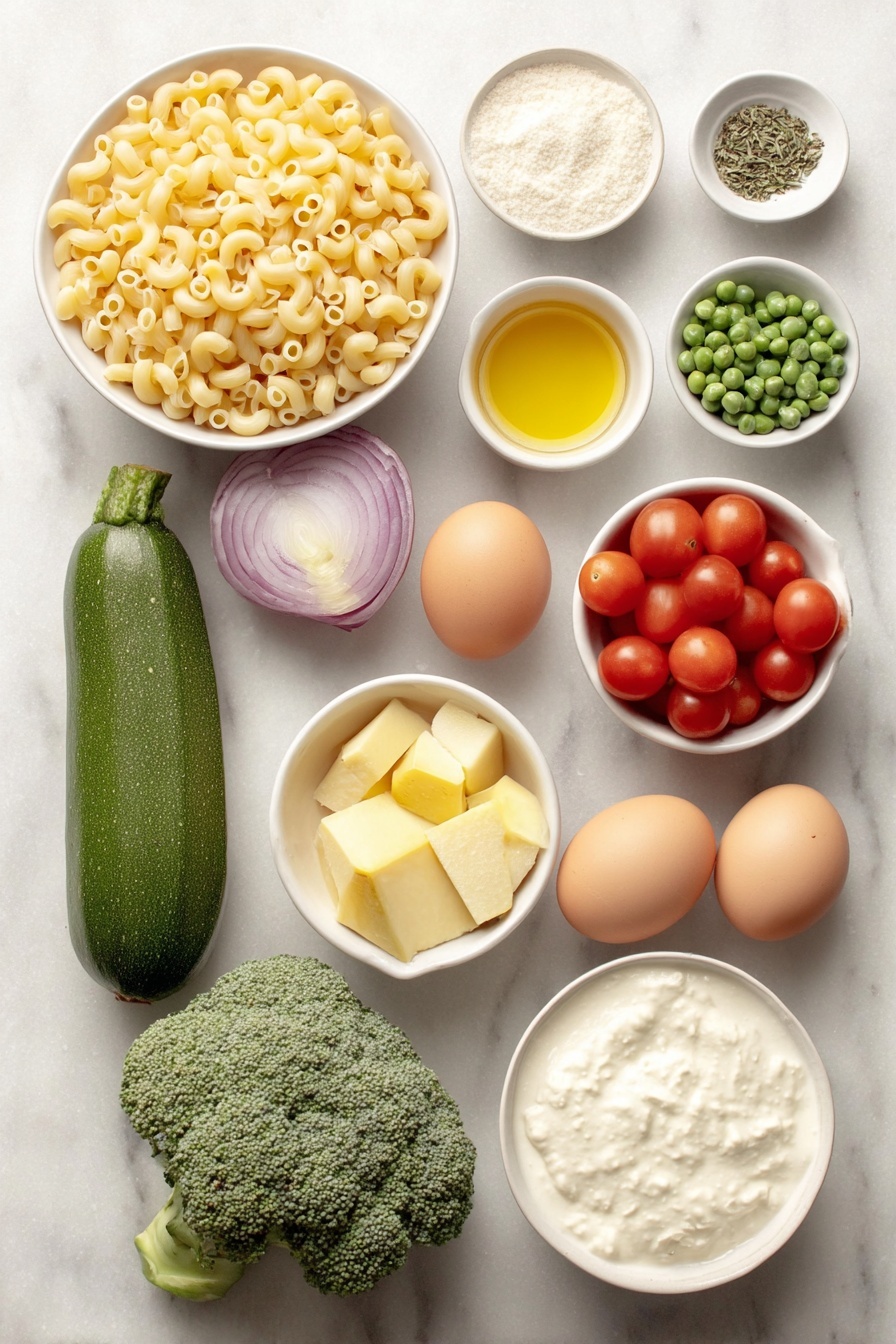
- Cavatappi or short pasta: The spiral shapes hold onto the creamy sauce perfectly, plus they're fun to eat!
- Extra virgin olive oil: Adds a rich, fruity base for sautéing without overpowering the other flavors.
- Red onion: Gives a touch of sweetness and a bit of bite that mellows beautifully when cooked.
- Broccoli florets: Adds a lovely crunch and a fresh green note.
- Yellow squash & zucchini: Their subtle flavor and tender texture balance the other veggies well.
- Asparagus: Offers a unique aromatic flavor and a satisfying snap when done right.
- Red bell pepper: Brightens the dish with sweetness and color.
- Cherry tomatoes: Bursting with juiciness, they give little pops of flavor throughout.
- Garlic & red pepper flakes: These aromatics build the base of flavor for the creamy sauce with just a hint of heat.
- Heavy cream & chicken broth: The combo makes a luscious sauce that coats the pasta and veggies without being heavy.
- Cornstarch: Helps thicken the sauce gently for that perfect consistency.
- Dried oregano, parsley, & thyme: Classic Italian herbs that add depth and earthiness.
- Lemon juice: Brightens the whole dish with a zesty freshness.
- Parmesan cheese: Freshly grated, it melts smoothly and gives the creamy sauce its savory umami kick.
- Frozen petite peas & fresh basil: Finally, they add sweetness and freshness that elevates the whole meal.
Make It Your Way
This Easy Vegetable Pasta Primavera Recipe is wonderfully flexible. I often switch out veggies based on what I have on hand or what’s in season, so don’t hesitate to get creative with it.
- Variation: One of my favorite tweaks is adding grilled chicken or shrimp for protein—just scale back the veggies slightly or add extra sauce to keep everything balanced.
- Vegetarian version: Simply swap chicken broth for vegetable broth, and it’s equally delicious and satisfying.
- Make it lighter: Use evaporated milk instead of heavy cream to cut calories without losing creaminess.
- Seasonal swaps: In spring, try fiddlehead ferns or snap peas; in fall, toss in some roasted butternut squash or kale instead.
Step-by-Step: How I Make Easy Vegetable Pasta Primavera Recipe
Step 1: Cook Your Pasta to Perfection
I start by boiling the pasta in plenty of salted water. Cavatappi is my go-to because its corkscrew shape traps lots of sauce, but feel free to use penne, fusilli, or your favorite short pasta. Remember to save about half a cup of the pasta water before draining—it’s magic for adjusting sauce consistency later.
Step 2: Sauté Your Veggies Just Right
In a big deep skillet or saucepan, heat 3 tablespoons of olive oil over medium-high heat. Toss in the red onions and broccoli first, cooking for about 3 minutes until they start to soften but still have a little crunch. Then add the squash, zucchini, asparagus, red bell pepper, and cherry tomatoes, along with a pinch of salt and pepper, sautéing for another 2 minutes. You want the veggies tender-crisp—not mushy—so keep an eye on the clock and use a timer if you have to!
Step 3: Build That Dreamy Sauce
Once the veggies are done, set them aside in a big bowl so you can use your skillet for the sauce. Add the remaining tablespoon of olive oil and sauté the garlic with red pepper flakes for about 30 seconds to release those mouthwatering aromas. Turn the heat down to low, pour in the heavy cream, then whisk together the chicken broth and cornstarch and add that in along with oregano, parsley, thyme, and a little salt. Simmer gently for 3-5 minutes until it thickens up nicely. Stir in half of the Parmesan cheese until melted and then add the lemon juice, thawed peas, and chopped basil.
Step 4: Bring It All Together
Gently fold the cooked vegetables into the creamy sauce, then add the drained pasta. I usually add reserved pasta water a bit at a time if I want the sauce a little thinner, but often I don’t need any. Give it a good stir, taste for seasoning, and add salt and freshly cracked pepper as needed. Finish with a generous sprinkle of Parmesan cheese on top before serving.
Top Tip
After making this Easy Vegetable Pasta Primavera Recipe countless times, I’ve learned a few simple tricks that make all the difference between “good” and “wow”:
- Perfect Veggie Texture: Use a timer to ensure your vegetables stay crisp-tender, never mushy. That bite is essential for a fresh primavera feel.
- Al Dente Pasta: Test your pasta a few minutes before the package timing—it should have a slight firmness to the bite, so it doesn’t turn soggy when mixed with sauce.
- Fresh Parmesan Only: Pre-shredded cheese won’t melt the same way. Grate fresh Parmesan for that silky finish every time.
- Use Reserved Pasta Water: This starchy water works wonders to loosen the sauce without watering it down.
How to Serve Easy Vegetable Pasta Primavera Recipe
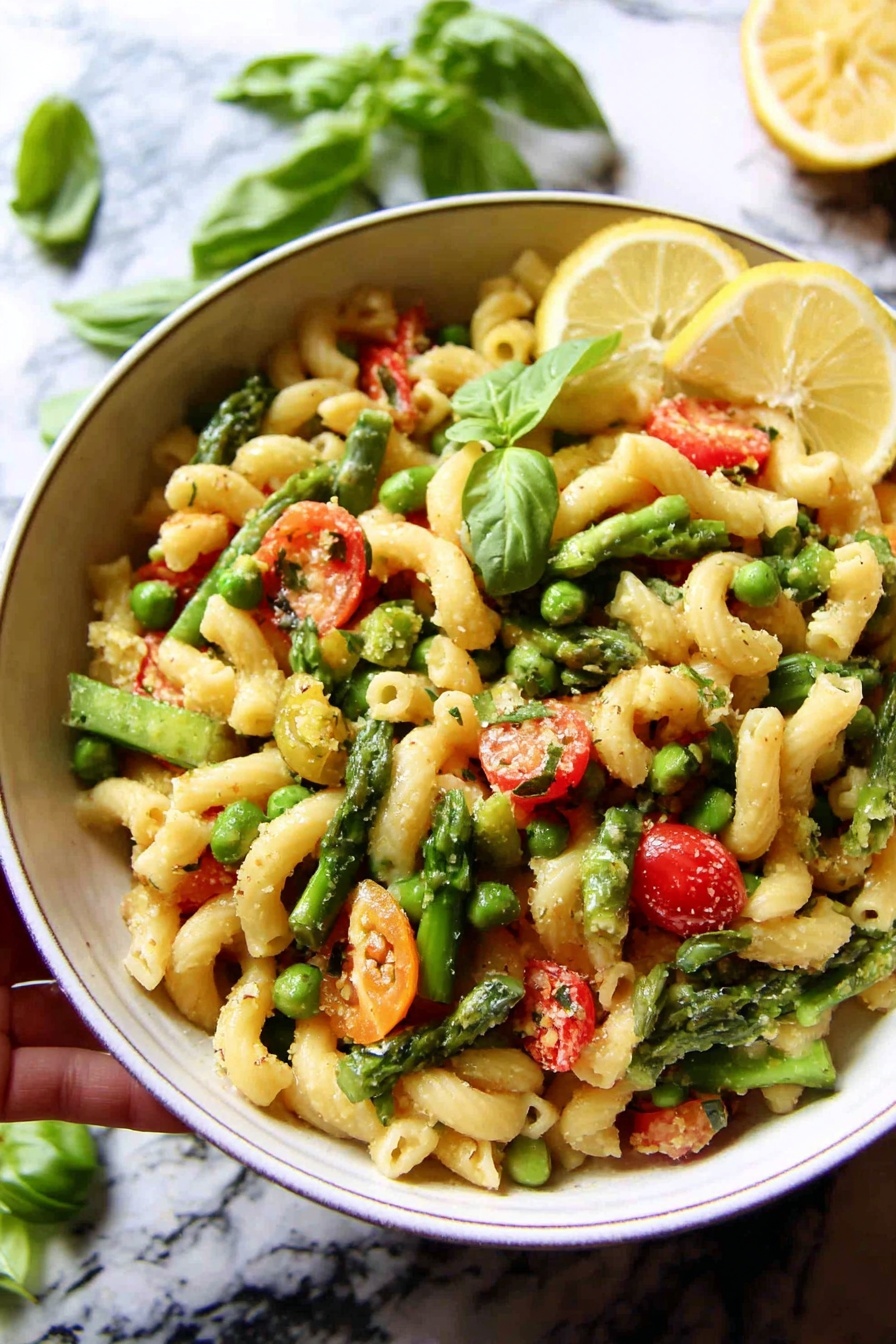
Garnishes
I always top my pasta primavera with extra Parmesan because, honestly, you can never have too much cheese! A scatter of fresh basil leaves adds a lovely fresh herbal note, and sometimes I sprinkle a few cracked red pepper flakes for a little unexpected heat.
Side Dishes
For sides, a crisp green salad with a light lemon vinaigrette pairs beautifully, or some crusty garlic bread to soak up any extra sauce is always a winner in my book.
Creative Ways to Present
When I’ve had friends over, I like to serve this pasta primavera in warm, shallow bowls and garnish with edible flowers or microgreens for a pop of elegance. It’s simple but looks so thoughtful and makes the meal feel special.
Make Ahead and Storage
Storing Leftovers
Leftovers store wonderfully in an airtight container in the fridge for up to five days. I always wait to add extra cheese until reheating to keep it fresh and melty.
Freezing
While I rarely freeze this dish because it’s so quick to make fresh, you can freeze it in portions. Just know the texture of some vegetables like zucchini might soften upon thawing, so I recommend freezing before adding the Parmesan or peas.
Reheating
I reheat leftover pasta primavera gently on the stove over medium-low heat, stirring often and adding a splash of milk or reserved pasta water to loosen the sauce. This keeps everything creamy and delicious without drying out.
Frequently Asked Questions:
Absolutely! While cavatappi works wonderfully because it traps the sauce, penne, fusilli, and orecchiette are great substitutes. Just cook according to package directions and be sure to save some pasta water to adjust the sauce.
The key is not to overcook them. Sauté the vegetables just until they’re tender-crisp, usually about 2-3 minutes depending on the vegetable. Using a timer helps, and high-quality fresh vegetables will also make a big difference.
Yes! To make a vegan version, substitute the chicken broth for vegetable broth, replace heavy cream with coconut cream or a plant-based cream alternative, and use vegan Parmesan cheese or nutritional yeast for that cheesy flavor.
Start by simmering the sauce until it thickens slightly, then add reserved pasta water a little at a time once you combine the sauce, pasta, and vegetables. This starchy water helps thin the sauce without diluting the flavors, letting you control the perfect consistency.
Final Thoughts
This Easy Vegetable Pasta Primavera Recipe is truly a go-to for me when I want something that tastes fresh, feels comforting, and comes together quickly. It's perfect for sharing with family or impressing friends without fuss. Give it a try—you might find it becoming a favorite in your own kitchen too!
Print
Easy Vegetable Pasta Primavera Recipe
- Prep Time: 15 minutes
- Cook Time: 15 minutes
- Total Time: 30 minutes
- Yield: 6 servings
- Category: Main Course
- Method: Stovetop
- Cuisine: Italian
- Diet: Vegetarian
Description
A vibrant and creamy pasta primavera featuring a variety of fresh vegetables sautéed to tender crisp perfection and tossed in a luscious Parmesan cream sauce with fresh herbs and a hint of lemon. This dish is perfect as a comforting yet healthy main course for six servings.
Ingredients
Pasta
- 12 oz. cavatappi or other short pasta such as penne, fusilli, or orecchiette
Vegetables
- ½ medium red onion chopped
- 2 cups broccoli florets cut into 1-inch pieces
- 1 medium yellow squash sliced and quartered
- 1 medium zucchini sliced and quartered
- 8 oz asparagus trimmed, cut into 1 ½-inch pieces
- 1 medium red bell pepper chopped
- 1 ½ cup cherry tomatoes halved
- 1 ½ cups frozen petite peas thawed
Sauce and Seasonings
- 4 tablespoons extra virgin olive oil divided
- salt and pepper to taste
- 4 cloves garlic minced
- ¼ teaspoon red pepper flakes
- 1 cup heavy cream (may substitute evaporated milk)
- 1 ½ cups chicken broth
- 1 tablespoon cornstarch
- 1 ½ teaspoons dried oregano
- 1 ½ teaspoons dried parsley
- ½ teaspoon dried thyme
- 2 tablespoons lemon juice
- ¾ cup freshly grated Parmesan cheese divided
- ¼ cup fresh basil chopped
Instructions
- Cook pasta: Bring a large pot of salted water to a boil and cook the pasta according to package directions until al dente. Reserve ½ cup pasta water before draining the pasta and set aside.
- Sauté vegetables: Heat 3 tablespoons of olive oil in a large deep saucepan or skillet over medium-high heat. Add chopped red onions and broccoli florets and sauté for 3 minutes.
- Add remaining vegetables: Add sliced yellow squash, zucchini, asparagus pieces, chopped red bell pepper, and halved cherry tomatoes to the pan. Season with ¼ teaspoon salt and ¼ teaspoon pepper. Sauté for an additional 2 minutes or until vegetables are tender-crisp. Transfer cooked vegetables to a large bowl and set aside.
- Prepare sauce base: In the now empty skillet, heat the remaining 1 tablespoon olive oil over medium heat. Add minced garlic and red pepper flakes and sauté for 30 seconds until fragrant.
- Make cream sauce: Turn heat to low and stir in the heavy cream. In a separate bowl, whisk together chicken broth and cornstarch until smooth, then add this mixture to the skillet along with dried oregano, parsley, thyme, and ¼ teaspoon salt.
- Simmer and thicken: Bring the sauce to a simmer and cook for 3 to 5 minutes until it thickens slightly. Reduce heat to low and stir in ½ cup freshly grated Parmesan cheese until melted. Then stir in lemon juice.
- Add peas and basil: Add thawed petite peas and chopped fresh basil leaves to the sauce and warm through gently.
- Combine all components: Return the sautéed vegetables to the sauce and stir well. Add the cooked pasta and toss everything together, adding reserved pasta water a little at a time if needed to achieve the desired sauce consistency.
- Final seasoning and garnish: Taste and adjust seasoning with freshly cracked salt and pepper as needed. Garnish with the remaining ¼ cup of Parmesan cheese or more to taste. Serve warm.
Notes
- Do not overcook the vegetables; aim for tender-crisp to maintain texture and flavor.
- Check pasta for al dente texture 2-3 minutes before package directions.
- Use a large, deep pan such as a saucepan, braiser, or Dutch oven to accommodate pasta and vegetables.
- Vegetable choices can be varied; include a colorful variety for texture and flavor.
- Use freshly grated Parmesan cheese for best flavor and melting quality.
- You can cook tomatoes less for a firmer texture or add them later with the cream for less bursting.
- Adjust lemon juice quantity to your taste preference for citrus brightness.
- This dish stores well refrigerated up to five days; reheat gently with a splash of milk or water.
- For meal prep, cook pasta al dente and toss with oil; store vegetables and aromatics separately.
- If adding protein, adjust vegetable quantities or increase sauce to keep balance.
Nutrition
- Serving Size: 1 serving
- Calories: 450 kcal
- Sugar: 6 g
- Sodium: 550 mg
- Fat: 20 g
- Saturated Fat: 9 g
- Unsaturated Fat: 10 g
- Trans Fat: 0 g
- Carbohydrates: 50 g
- Fiber: 6 g
- Protein: 15 g
- Cholesterol: 50 mg

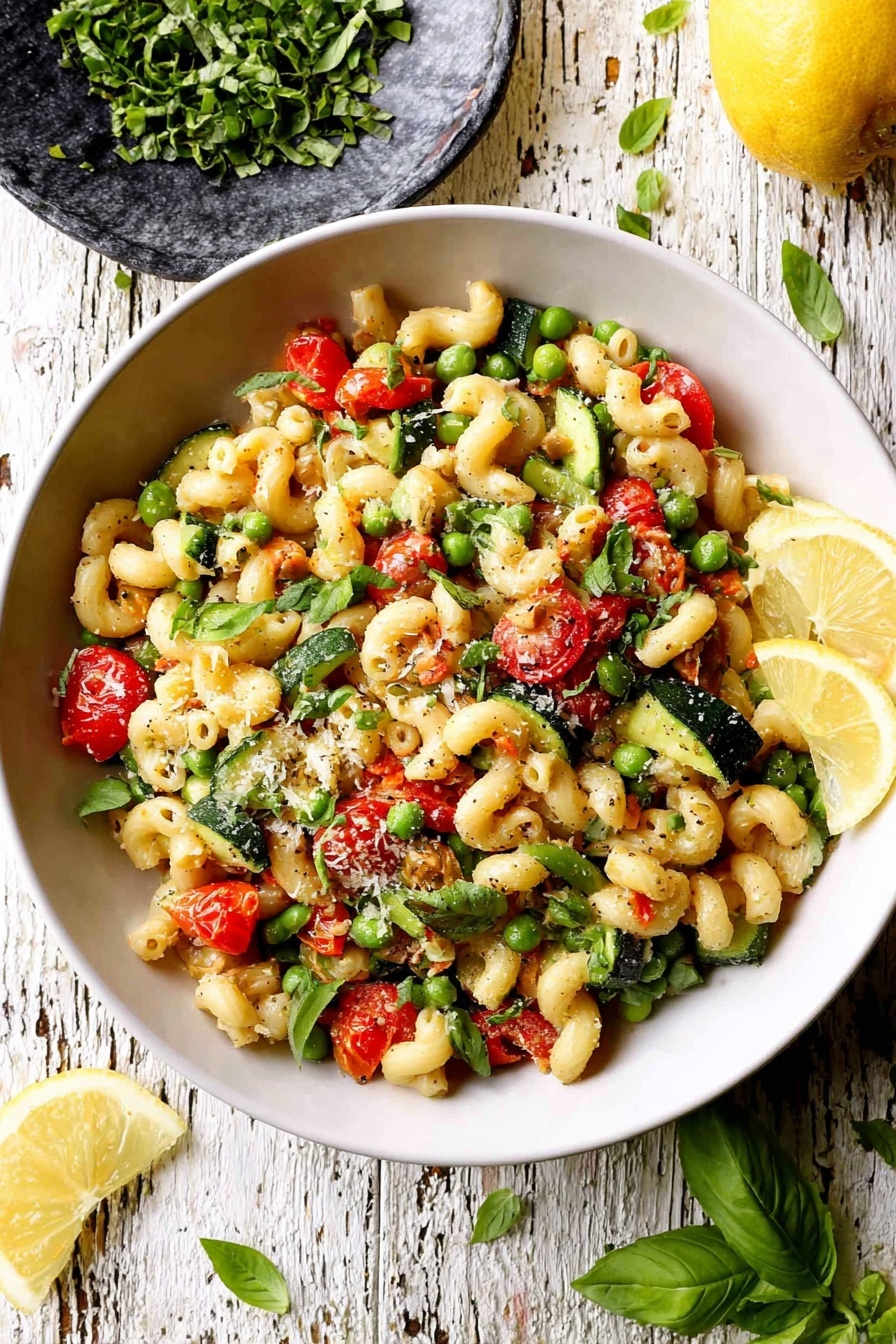
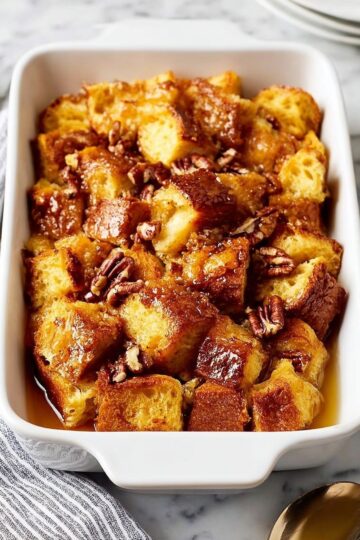

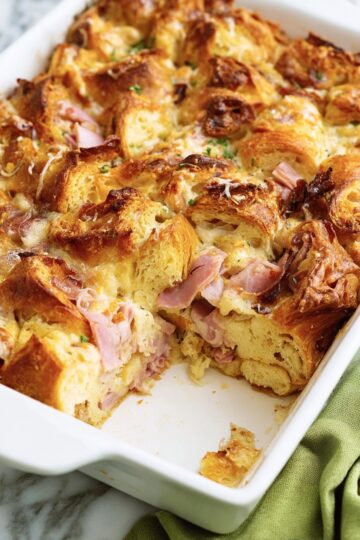


Leave a Reply